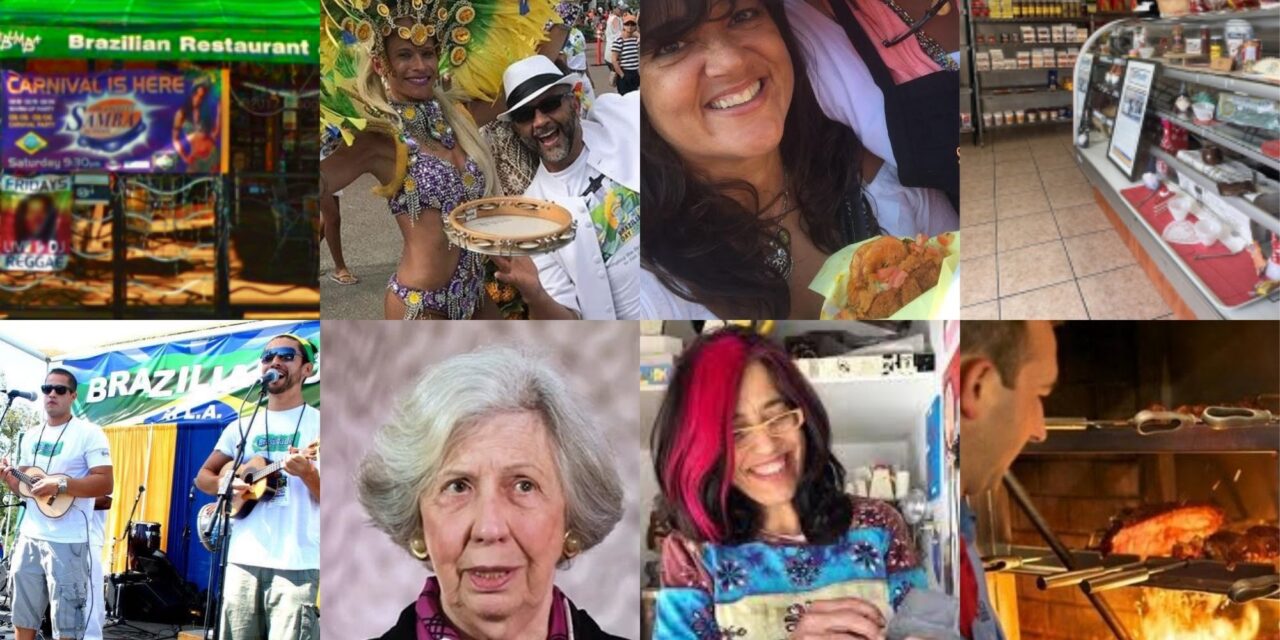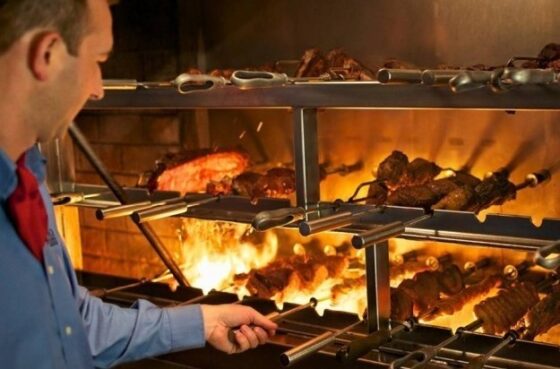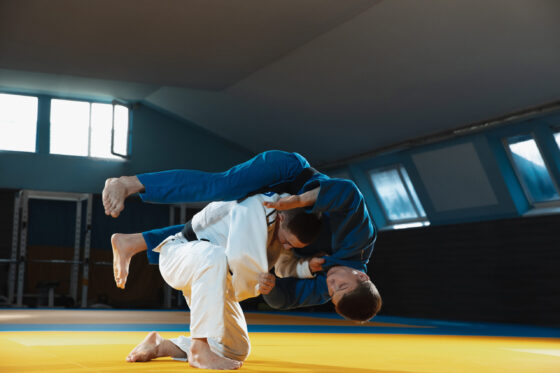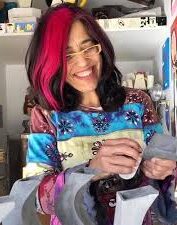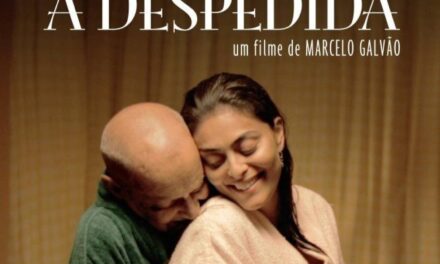By Lindenberg Junior
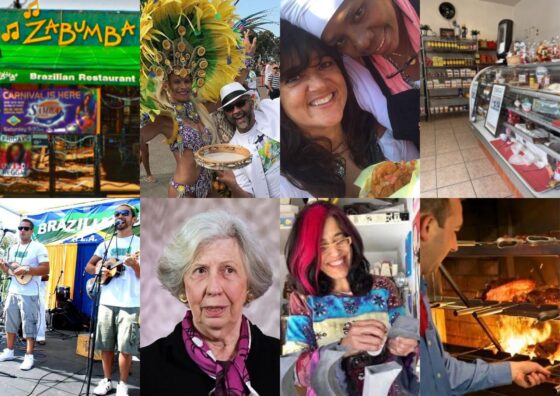 Years ago I had a conversation with the then ambassador of Brazil in Los Angeles, Thereza Maria M. Quintella in her office at the Brazilian General Consulate in L.A. The ambassador talks about her consular experiences in London, Moscow, and her beloved city of Rio de Janeiro, as well as her job here in L.A. She mentioned with enthusiasm the positive image of Brazil among Americans in Los Angeles: “I see a great reaction from Americans when someone mentions being Brazilian”. She added “I think that Los Angeles is a city with a growing demand in search of Brazil and its culture, and actually it would be a good idea for airlines to offer more options of direct flights connecting this city to our country”.
Years ago I had a conversation with the then ambassador of Brazil in Los Angeles, Thereza Maria M. Quintella in her office at the Brazilian General Consulate in L.A. The ambassador talks about her consular experiences in London, Moscow, and her beloved city of Rio de Janeiro, as well as her job here in L.A. She mentioned with enthusiasm the positive image of Brazil among Americans in Los Angeles: “I see a great reaction from Americans when someone mentions being Brazilian”. She added “I think that Los Angeles is a city with a growing demand in search of Brazil and its culture, and actually it would be a good idea for airlines to offer more options of direct flights connecting this city to our country”.
At this occasion, in 2007, I also asked what she thought to be the best and worst aspects of living in Los Angeles. “The best is to live in a city that is arranged mainly with houses instead of buildings. It fascinates me as well the fantastic weather! The worst is that we have to deal with chaotic traffic on a daily bases”. The ambassador’s answers did not surprise me because in the same year, at the time of the first edition of this article, we interviewed 100 Brazilian residents of LA and 90% gave similar answers. Ambassador Quintella was the person who idealized and made efforts to create the first annual “Brazilian Day in L.A” in September, the month that we celebrate the independence of Brazil. Her idea was pioneering not only in L.A but to the U.S West Coast and happened for 6 years in a row, but unfortunately did not continue, partly, by the crisis in Brazil and the cut of governmental funds.
The Brazilian community in L.A began to settling in the late 80’s when there were already thousands of Brazilians who were attracted by the wonderful climate, the beaches, surf culture and skateboarding, and of course, Hollywood (and many even by the music of 90’s superstar Lulu Santos “Garoto eu Vou Para California, vou ser Artista de Cinema…o Meu Destino e/ ser Superstar…”)
A time when there was no internet, a call to Brazil did cost more than US $1 per minute, and that there was not much options to buy Brazilian products here in L.A or SoCal – we had to bring it from Brazil or ask family members to send it through the mail or through friends coming from Brazil . Toasted yucca flour to make “farofa” and palm oil to make a delicious moqueca, among many other Brazilian products, were considered luxury products as we did not find it here.
- Brazilian Markets
However, since the 90’s this situation has begun to change step by step. After 2000 there was the opener of Kitanda Brazilian Market in Sherman Oaks (closed years later) and the Supermercado Brasil in Culver City. A few years later, the Hi Brazil Boutique in Redondo Beach and the Brazil Mania in Torrance. After 2005, a greater number of Latinos markets also began to offer Brazilian products available on their shelves, such as El Mambi in Glendale, El Camaguey in Culver City, Continental Gourmet in Hawthorne and Lomita (and more 3 locations), Carniceria Argentina in North Hollywood, and Latimex Market in Chino (East of L.A). Some of this latino markets even offer beer and/or meat cut Brazilian style such as “Picanha”
- Brazilian Restaurants
Also in the beginning of the 90’s was the time where the first Brazilians restaurants started to open. The “All you Can Eat” pioneer was the Brazil by the Bay in Torrance while the “A La Carte” pioneer was the Café Brasil in Culver City. Nowadays there are many Brazilian restaurants to choose from, but the predominance is for sure the Brazilian Steakhouses such as the Fogo de Chao (various locations). Talking about pioneerism, the Pampas Grill inside the landmark Farmer Market has established the“paid by the pound” BBQ style, and with the success reached, a few years later, they opened its second location in Culver City. We would also like to mention the Bossa Nova (various locations) and Silvio’s Brazilian BBQ, for their idea to make an American Brazilian fusion. Silvio’s Brazilian BBQ, after many years established in Hermosa Beach and his “California Surf” culture environment, changed ownership and name to Panelas HB.
- The Capoeira
The Brazilian martial art form is a strong expression of our culture and in Los Angeles could not be different. Many of its techniques can be seen in the movie Catwoman, where actress Halle Berry learned some traditional capoeira movements in order to perform some the most electrifying scenes in the movie. Master Boneco from the group Capoeira Brasil in Culver City, who was Berry’s private trainer, states that: “It is very exciting to see capoeira flowing into American culture”. Besides Capoeira Brasil and among the most traditional capoeira groups in L.A are the group of Capoeira Batuque, also in Culver City. The founder of the group, master Amen Santo, was the capoeira master pioneer in L.A and was one of the first to open up relations with Hollywood. In the movie Only the Strong with Jean Claude Van Damme, Master Amen’s involvement served as a representation of both capoeira and Brazil. Currently, there are several groups of Capoeira around L.A.county.
- Brazilian Jiu-Jitsu
The Brazilian Jiu-Jitsu was made famous worldwide by the Gracie family – that for years was established in L.A, and who were among the first to bring its techniques to North America. Hollywood producers realized the potential of the sport, and used many of its techniques to choreograph fight movies such as the final scene in Lethal Weapon with Mel Gibson. Many Hollywood celebrities practice Brazilian Jiu-Jitsu, including Chuck Norris, Vin Diesel and Guy Ritchie. There are many Jiu-Jitsu academies spread throughout the city and the Museum of Brazilian Jiu-Jitsu, inside the Gracie Academy in Torrance, founded by Rorion Gracie, son of legendary BJJ master, Helio Gracie.
- Brazilian Soccer
As soccer is a Brazilian Mania, we would like to mention an interesting fact. With the intention of relieving stress and having some fun, a group of Brazilians initiated a weekly soccer game on Saturdays in the Glendale College in 1979. After 6 years the game moved to Pasadena High School. During this time Brazilian soccer celebrities as Pelé, Jairzinho, Marinho Chagas, Paulo Cesar Caju and Junior, all former professional soccer players and Brazilian stars, visited this Brazilian gathering while they were in L.A, emphasizing its growing importance. This tradition has moved to different locations through the years, and is still alive (2025), thanks to Almir Santer (one of the founders) and many others old school Brazilians that put together “uma pelada” (soccer between friends) following a Brazilian barbecue every saturday during an afternoon – locations changed many times, but in 2025, the game was in Culver City and the barbecue in the Mothers Beach in Marina Del Rey.
- Surf, Skate, and Beach Culture
In Brazil, relax and sports often go hand in hand, and a good example of this phenomenon it’s the fact that Brazilians loves the beach culture, the foot volley, the frisbee, relaxing and getting a tan, and many Brazilians get together in Redondo Beach and Hermosa Beach, in the same way they did in the 90’s nearby the Venice Beach pier. Surfing and skateboarding is also a passion for many Brazilians, and some of the most famous Brazilian professionals and entrepreneurs in these fields, live in L.A (and also Orange County).
- Brazilian Music and Dance
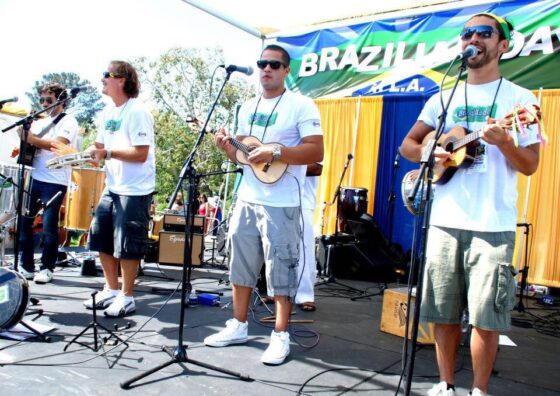 Brazilian music in Los Angeles has found its outlet through two radio shows, both hosted by Sergio Mielniczenko. “Brazilian Hour” is an online radio show – more info www.brazilianhour.org, and “Global Village” on Fridays at KPFQ 90.7 FM. There are also many local Brazilian musicians who lives for years in LA, among them the internationally recognized Sergio Mendes (who died in 2024), the percussionist Airto Moreira and his wife Flora Purim. Moreira says: “with the heavy traffic, everything is too far away and seems that I’m always late”. For him, the enchantments of the city are in the different canyons that cross the Valley to the coast and the natural beauty that the scenery offers. But there are so many Brazilian talented musicians in L.A and you can find over 60 of them HERE.
Brazilian music in Los Angeles has found its outlet through two radio shows, both hosted by Sergio Mielniczenko. “Brazilian Hour” is an online radio show – more info www.brazilianhour.org, and “Global Village” on Fridays at KPFQ 90.7 FM. There are also many local Brazilian musicians who lives for years in LA, among them the internationally recognized Sergio Mendes (who died in 2024), the percussionist Airto Moreira and his wife Flora Purim. Moreira says: “with the heavy traffic, everything is too far away and seems that I’m always late”. For him, the enchantments of the city are in the different canyons that cross the Valley to the coast and the natural beauty that the scenery offers. But there are so many Brazilian talented musicians in L.A and you can find over 60 of them HERE.
Besides Sergio, Airto e Flora, some of the pioneers and oldest Brazilian residents of L.A are Katia Moraes, Sonia Santos, Ana Gazola, Flavio Ribeiro, and Kleber Jorge. If you like to learn samba, have fun, just improve your skills or a simply desire to be introduced to the pleasure of the Brazilian rhythm, there are many good options to choose from. Again, just to mention a few and the oldest residents, Brazilian dancers/choreographers Aninha Laidly, Jonia McClenney, and Katia Vaz offer a variety of classes from Samba do Afro Brazilian in different studios around town.
- Brazilian Faith
A good part of the expression of our culture comes from the strong religious sentiments of our people. And just as God is great… There are a great number of religious communities located all over the city, including evangelistic churches; among them, Baptist, Methodist, Assembly of God and Adventist; a spiritism center, and even a umbanda center. All are contributing to the well being and comfort of our people, who find in these communities a way of socializing and extending their spheres of friendship. These communities serve to reduce feelings of cultural isolation and loneliness as well as to improve spiritual bonds.
- Career and Professions
In terms of careers, the great variety and diversification of Brazilian professionals has become more and more noticeable, year by year. Besides the good numbers of Brazilian babysitters and valets, you can find hair stylists, personal trainers, event promoters, realtors, travel and insurance agents, lawyers, psychologists, dentists, doctors and therapists, artists, as well as a great numbers of professionals in the field of cinema such as actors and filmmakers.
Bakari Santos, for example, is an artist, craftsman and promoter very well-known among the Brazilians in California, and who arrived in the 80’s in Los Angeles. “I think the desert climate with hot days and cool evenings, the many options to join beach, mountains and parks, the beauty and diversity of its people together and the cosmopolitan vibe of this city attract a lot of us, Brazilians as well people from all over the world”, said Bakari. Another Brazilian artist pioneer is the ceramist Sandra Zebi that arrived in L.A in the late 80’s.
There are also many younger American- Brazilians talents that were born in L.A and should help to spread the “brand” Brazil in the future. All of them are striking expressions of Brazilian culture. We finish this special article with a comment made by realtor Vladimir Bellemo, another pioneer and a long time resident of Los Angeles and Orange County: “Unfortunately due to real estate speculation in recent years, as a result, in part, this vast interest in moving to Los Angeles made rents and real estate values skyrocket at exorbitant prices. But it is something natural, as it happens in cities like New York and Sao Francisco”.
- Brazilian Media and the Takeway
Anyone who lived in Los Angeles in the early 2000s had the opportunity to see Marcelo Gomes’ Brazil Explore magazine come into being and, less than two years later, to witness the birth of Soul Brasil in the Californian summer of 2002. Finally, we remember that after the Covid-19 pandemic, the number of Brazilians interested in living in Los Angeles increased considerably, including Brazilians who already lived in the US and in states such as Florida and Massachusetts. At the time of this latest update, in 2025, it can be estimated, but not officially, that there could easily be more than 70 thousand Brazilians living in Los Angeles County.

